Exploring the Evolution and Growth of DeSoc Apps
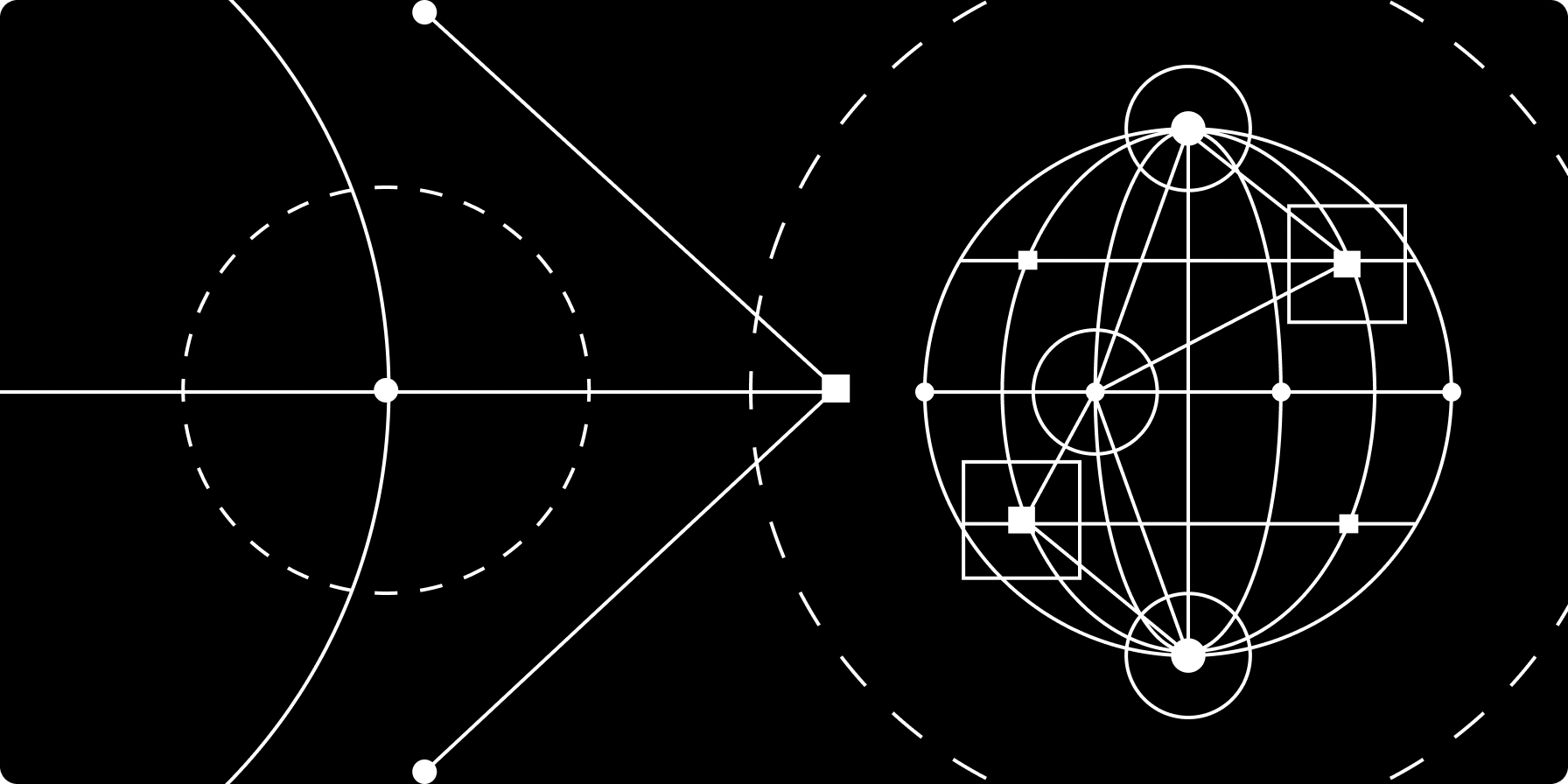
Introduction
DeSoc, short for "decentralized social networks," is a growing sector of crypto that utilizes blockchain technology to establish a novel standard for sharing ideas and information digitally. These applications, like many in the broader crypto industry, are designed to promote values of data ownership, transparency, and censorship resistance. The inception of blockchain-based social media platforms dates to 2016, which is when the first blockchain based DeSoc app, Steemit, launched on the Steem blockchain.
Unlike traditional social media apps that usually require an email to sign in, DeSoc apps use a blockchain wallet’s private key signature to sign-in. Upon signing into a DeSoc app with a blockchain wallet, users can share content, follow other users, and collect digital goods in the form of fungible and non-fungible tokens. The ownership of user data is controlled by the user's wallet and is typically stored in a decentralized file storage setup, deviating from the use of centralized data hosting services like AWS and Google Cloud, which is what large social media conglomerates such as Facebook and Twitter use. Certain DeSoc apps also offer data transferability, providing users with a unified experience across various apps without the hassle of creating new profiles. Crucially, the technical architecture of DeSoc apps ensures a seamless connection between a user's profile data and their blockchain wallet.
This report analyzes on-chain activity since 2021 across the most popular DeSoc apps including Farcaster, Friend.tech, DeSo, and others. The report also dives into the narratives and growth strategies fueling adoption for DeSoc apps, particularly the adoption of Farcaster, a relatively new DeSoc app responsible for more than 30% of all DeSoc-related transaction activity in 2024.
Active Users
In 2016, the first DeSoc app called Steemit launched on their own blockchain. Since then, DeSoc apps have collectively accumulated over 8.7m users and facilitated over 82m transactions across Ethereum, Optimism, Arbitrum, Polygon, BSC, and other Layer-1 blockchains. As of April 6, 2024, the total monthly active users on DeSoc platforms is ~550k users. Users in this context are defined as unique wallet addresses that have interacted with a DeSoc app’s smart contracts in the past month. For most crypto applications, differentiating an active user from a seasonal user is not trivial. The analysis in this report defines “active users” as users that have interacted with the application’s smart contracts at least once in the app’s lifetime.
The top DeSoc apps monthly active users represent roughly 0.15% of Twitter/X’s monthly active userbase. It is crucial to highlight that the two DeSoc apps with the highest number of cumulative users launched between 2020 and 2021, affording them a more extended period for user onboarding than Friend.tech and Farcaster. DeSo, a Layer 1 blockchain released in June 2021, holds the highest number of user sign-ups among DeSoc apps at 3m cumulative users. Cyber Connect, a decentralized social graph supporting all EVM-compatible chains released in September 2021, has the second highest number of cumulative DeSoc user sign-ups with 1.5m users interacting with the application over its existence.
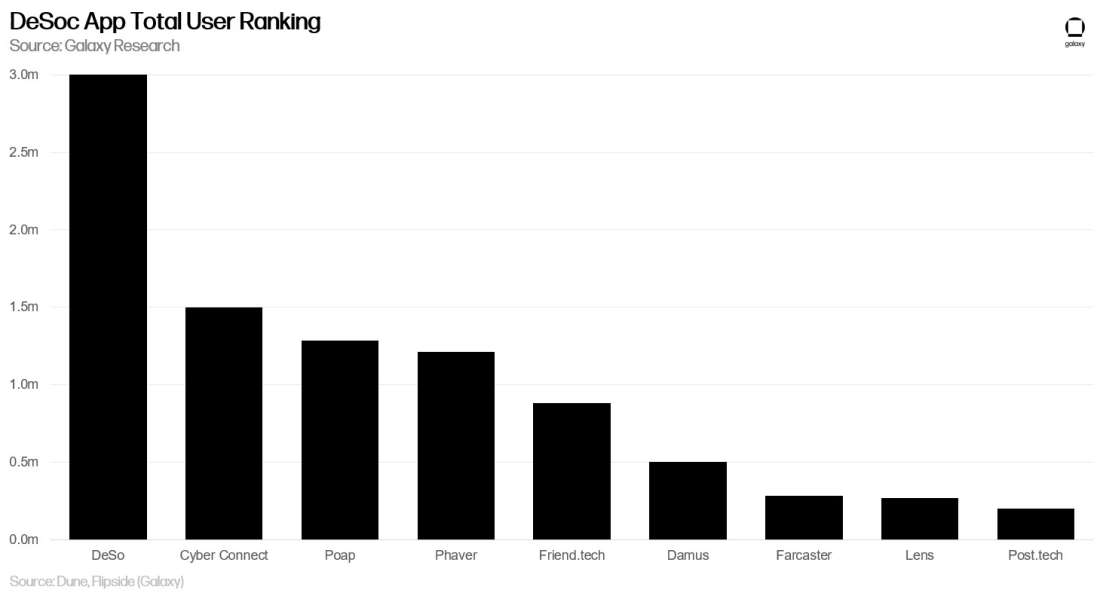
The top five DeSoc applications represent 85% of total sign-ups. As of April 6, 2024, DeSo represents 32% of the total share of sign-ups on DeSoc apps. Although Farcaster’s surge in users started in late January 2024, the relatively new DeSoc platform already represents 3% of total DeSoc sign-ups.
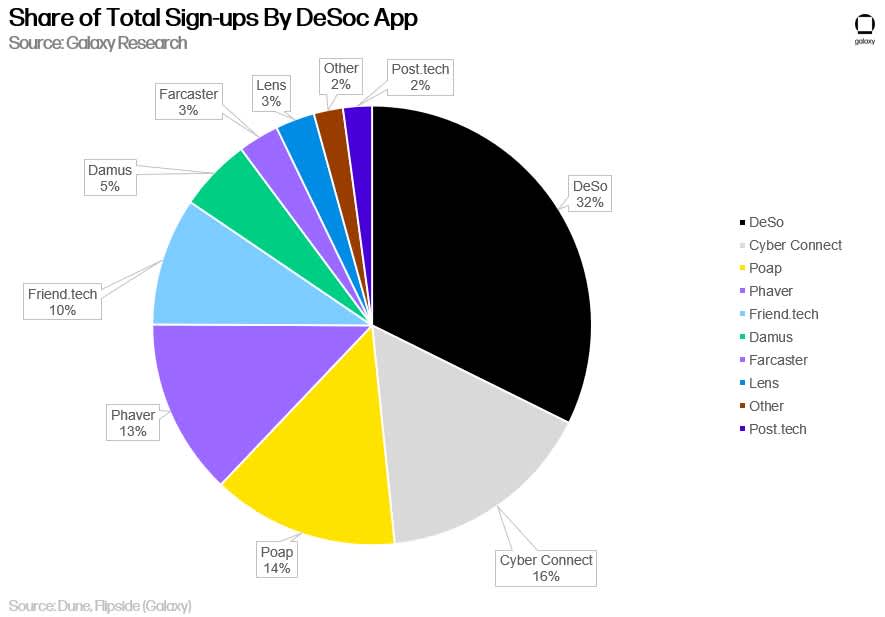
DeSoc applications have different user experiences and focuses. Below is a breakdown of the most popular DeSoc apps by category:
Legacy Social Media – User experience that includes public posting, commenting, liking, and private messaging.
Social-fi – User experience involving the purchase of assets that give access to gated content (Friend.tech keys) and/or create fractional ownership of social media content (post.tech).
Collecting – User experience focused on the collection of digital assets, mainly NFTs.
Other – User experience that does not fall into the above three specified categories.
Legacy social media DeSoc apps are the most used applications in the DeSoc sector today, representing 67% of total user sign-ups. This category is the combination of four apps, while the collecting category represents just the POAP DeSoc app. Notably, despite the Social-fi sector emerging in August 2023, this sector ranks third in user sign-ups. Although the activity on Social-fi DeSoc apps like Friend.tech have fallen off dramatically, their rapid success and ability to compete with older DeSoc sectors is significant.
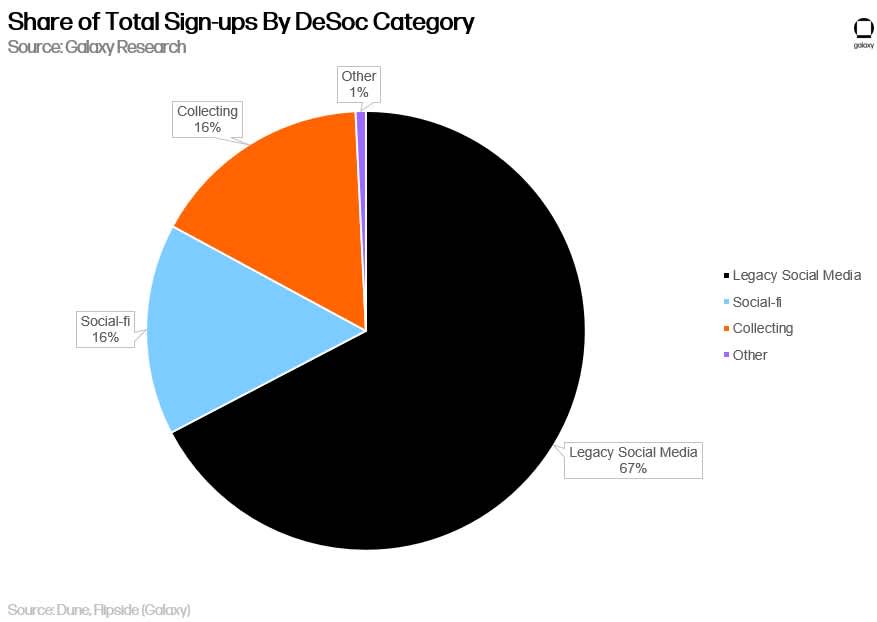
From September 1, 2023 to April 1, 2024, the cumulative number of DeSoc users increased by 2.9m in large part due to the launch of Friend.tech, a Social-fi DeSoc app on the Base Layer-2 (L2) rollup. Friend.tech contributed significantly to the overall DeSoc user count by adding over 800k users from August 10, 2023 to January 1, 2024. Despite Friend.tech’s short-lived success, the app clearly sparked a resurgence in other DeSoc apps. After Friend.tech’s user count started to plateau in late October 2023, other DeSoc platforms such as Cyber Connect, Farcaster, POAP, and Lens started to gain new users, as seen in the chart below:

Friend.tech’s explosive growth in 2023 positioned DeSoc to be Web3’s comeback sector of the year. Friend.tech’s userbase increased 416x in 3 months and the app generated over $27m in revenue. The driving force behind this activity was due to anticipation for a Friend.tech token airdrop. However, with no sign of an airdrop from the Friend.tech team as of April 6, 2024, user activity has since dropped off. In October 2023, Friend.tech’s average daily active user count for the month was 22.7k, while in January 2024, this metric dropped to 1k.
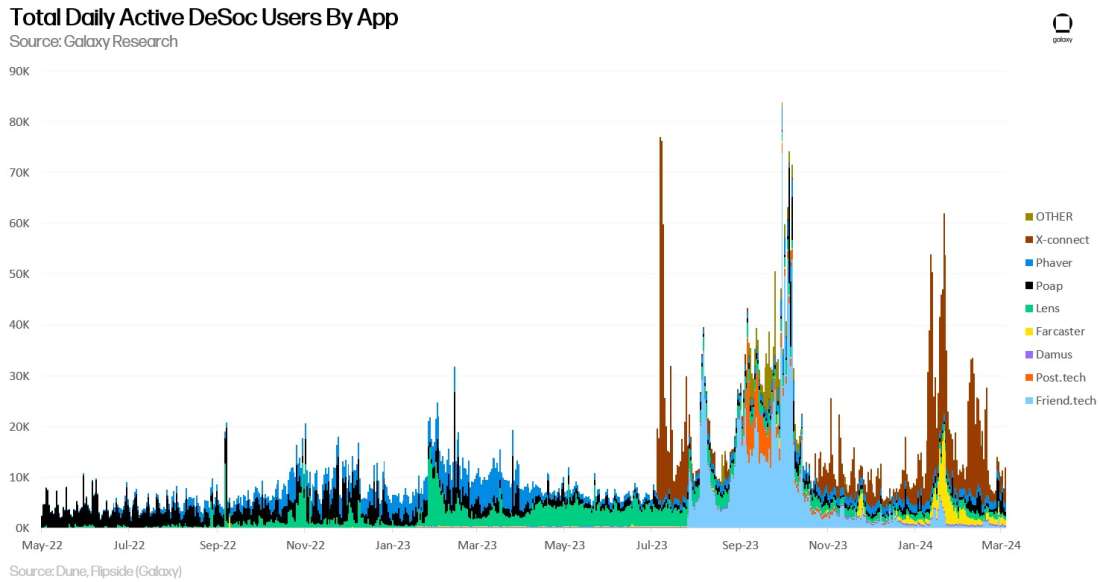
Transaction Count
For users on DeSoc apps to post about a topic, comment on another user’s post, repost, and complete other actions, they typically need to sign a transaction on-chain. Therefore, transactions interacting with a DeSoc app’s smart contracts reflect the application’s usage.
From November 2023 to January 2024, DeSoc apps experienced a plateau in user transaction activity and active daily user counts. DeSoc’s daily transaction count only began to exhibit promising signs of growth on February 1, 2024, witnessing an impressive 3x surge from the preceding two weeks. This uptick in transaction activity is in part attributed to the resurgence in Farcaster users looking to claim airdrops from sub-communities also known as channels.
Farcaster is a legacy social media DeSoc app on Ethereum L2 Optimism that launched in September 2022. Channels are forums on Farcaster with a designated topic. For example, the Bitcoin channel is where Farcaster users that are interested in Bitcoin can share and discuss ideas about Bitcoin. On January 28, 2023, Farcaster’s fastest growing channel, Degen, announced an airdrop for their $DEGEN token to all channel participants. It should be noted that the creators of the Degen channel and the token $DEGEN have no affiliation with the Farcaster team.
Farcaster’s surge in transactions in mid-February 2024 was also motivated by the launch of Frames, a new feature allowing users to embed a web-based app within a Farcaster post. Through Frames, users can create token mint launchpads, interactive games, and voting polls in a Farcaster post. Building off Farcaster’s momentum, there has been a small resurgence in user transaction activity on other DeSoc apps, namely Lens and X-Connect. As of April 6, 2024, Farcaster has facilitated over 6m unique daily transactions.

User growth strategies fueled by opportunities to monetize exclusive access to users and social media content have the highest initial payoff for DeSoc apps. Friend.tech accumulated 820k users in 2 months while Instagram and Twitter took 3 months and 2 years respectively to reach similar levels. However, with or without financial incentives, DeSoc apps struggle with user retention over the medium to long-term, as we’ll discuss in the next section on DeSoc narrative cycles.
The History of DeSoc Narrative Cycles
Historically, spikes in DeSoc activity tend to follow a power law where one application represents the majority of activity across all DeSoc apps. These boom-and-bust cycles for DeSoc apps highlight that DeSoc users are not sticky and frequently jump to the next popular DeSoc app. The last three spikes in activity from 2022–2024 are telling as they prove that DeSoc activity is driven by cyclical narratives.
The first meaningful spike in DeSoc activity was in March 2023 and primarily driven by Lens, a legacy social media DeSoc app on Polygon, and X-Connect, another legacy social media app on Binance smart chain. At the time, decentralized social media apps that mirrored Web2 social media apps took the mind share of the DeSoc market. The second spike in DeSoc activity in September 2023 was attributed to Friend.tech, which introduced a new category of DeSoc called “Social-fi” (social finance). As mentioned before, Social-fi involves purchasing access to gated content and/or buying fractional ownership of a user’s content.
The third spike in DeSoc activity in February 2024 was due to a resurgence in user interest in Farcaster. The recent rise of Farcaster represents a revival of the decentralized legacy social media movement last seen in March 2023 with Lens and X-Connect.

If historical patterns hold true, Farcaster's on-chain activity may decline after 3 to 4 months like how prior surges in activity for other leading DeSoc apps in the past have fizzled out. However, due to its modular architecture which encourages constant innovation from channel creators, Farcaster stands out as having the potential to retain a high-level of user activity.
Similar to Lens and X-Connect, Farcaster supports a framework for third-party developers and social media creators to easily build and launch their own DeSoc apps. Existing users of Farcaster can then connect to Farcaster-based DeSoc apps without the hassle of having to create new accounts to try out these applications. Additionally, through the introduction of Frames, Farcaster channels and apps outside of the Farcaster ecosystem have increased flexibility to engage with their users through building their own tokens, polls, and interactive games. Such programmability enabling highly curated user experiences on Farcaster holds promising potential to propel sustainable user growth and activity in DeSoc.
Conclusion
DeSoc's trajectory toward mass adoption is yet to unfold, but the sector's resurgence over the past 12 months is nothing to gloss over. In roughly four years, the userbase of DeSoc apps has grown by 8.7 million sign ups. Inevitably, as the global pie of crypto holders increases over the next decade, we should expect increases in DeSoc users. Like NFTs, gaming, and DeFi, DeSoc is a subsector of the crypto industry that has the potential to drive mainstream adoption of blockchain-based technology and cryptocurrencies. Looking ahead, Farcaster stands out as a DeSoc app for its focus on user retention and sustainable growth strategies through creator-led features and content generation.
Legal Disclosure:
This document, and the information contained herein, has been provided to you by Galaxy Digital Holdings LP and its affiliates (“Galaxy Digital”) solely for informational purposes. This document may not be reproduced or redistributed in whole or in part, in any format, without the express written approval of Galaxy Digital. Neither the information, nor any opinion contained in this document, constitutes an offer to buy or sell, or a solicitation of an offer to buy or sell, any advisory services, securities, futures, options or other financial instruments or to participate in any advisory services or trading strategy. Nothing contained in this document constitutes investment, legal or tax advice or is an endorsement of any of the stablecoins mentioned herein. You should make your own investigations and evaluations of the information herein. Any decisions based on information contained in this document are the sole responsibility of the reader. Certain statements in this document reflect Galaxy Digital’s views, estimates, opinions or predictions (which may be based on proprietary models and assumptions, including, in particular, Galaxy Digital’s views on the current and future market for certain digital assets), and there is no guarantee that these views, estimates, opinions or predictions are currently accurate or that they will be ultimately realized. To the extent these assumptions or models are not correct or circumstances change, the actual performance may vary substantially from, and be less than, the estimates included herein. None of Galaxy Digital nor any of its affiliates, shareholders, partners, members, directors, officers, management, employees or representatives makes any representation or warranty, express or implied, as to the accuracy or completeness of any of the information or any other information (whether communicated in written or oral form) transmitted or made available to you. Each of the aforementioned parties expressly disclaims any and all liability relating to or resulting from the use of this information. Certain information contained herein (including financial information) has been obtained from published and non-published sources. Such information has not been independently verified by Galaxy Digital and, Galaxy Digital, does not assume responsibility for the accuracy of such information. Affiliates of Galaxy Digital may have owned, hedged and sold or may own, hedge and sell investments in some of the digital assets and protocols discussed in this document. Except where otherwise indicated, the information in this document is based on matters as they exist as of the date of preparation and not as of any future date, and will not be updated or otherwise revised to reflect information that subsequently becomes available, or circumstances existing or changes occurring after the date hereof. This document provides links to other Websites that we think might be of interest to you. Please note that when you click on one of these links, you may be moving to a provider’s website that is not associated with Galaxy Digital. These linked sites and their providers are not controlled by us, and we are not responsible for the contents or the proper operation of any linked site. The inclusion of any link does not imply our endorsement or our adoption of the statements therein. We encourage you to read the terms of use and privacy statements of these linked sites as their policies may differ from ours. The foregoing does not constitute a “research report” as defined by FINRA Rule 2241 or a “debt research report” as defined by FINRA Rule 2242 and was not prepared by Galaxy Digital Partners LLC. For all inquiries, please email contact@galaxydigital.io. ©Copyright Galaxy Digital Holdings LP 2024. All rights reserved.



